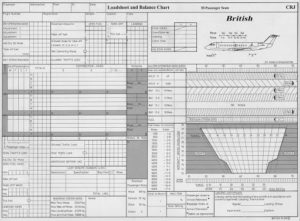

Basic course Loadcontroller in compliance with IATA Airport handling manual 590 including Weight & Balance.
Goal: Provide the participant with the knowledge needed to be able to perform the tasks of Loadcontroller.
Relevant audience: personnel involved with loadplanning, loadcontrol, weight & balance planning of airfreight
Previous education: VWO level.
Education level: MBO 4.
Content: In order to achieve the required standards of competence for the load control functions concerned, the training programs should compromise the following items of theoretical and practical knowledge:
- General weight and balance proficiency and awareness, Terms used in the load Control environment (vocabulary, acronyms, operational codes and abbreviations). Definition and composition of the aircraft design and operational weights. Aircraft balance principles.
Consequences of improper loading on flight and personnel safety.
- Aircraft structural load limitations, Linear (running load) limitation, Area limitation, Limitation compartment, Monocoque limitation, Cumulative limitation, Missing restraints limitations. – Unit load devices Knowledge of the ICAO/IATA id codes, Gross weight en hold restraint requirements, container / pallet build op, Tagging.
- Bulk holding loading, Load spreading rules, Load restraint rules: aircraft nets, tie-down, volume restraint.
- Load sheet, Computation, issuance and check in both manual and computerized modes, Last minutes change mode
- Balance tables / charts, Computation, issuance and check in both manual and conventional modes (Index weights, graphic charts etc.)
- Loading instruction report, Knowledge of the aircraft holds designation and numbering, Issuance and check in both manual and computerized modes,
- Loading Messages, Reading and sending of the standard loading messages: LDM and CPM – Dangerous goods, Cargo IMP codes, Loading restrictions and compatibility rules, NOTOC completion, Emergency procedures in case of incidents.
- Special loads (Perishables, EAT, AVI, WET, OBX, LHO etc.) Cargo IMP codes, Marking and labeling, NOTOC completion (Loading positions),
- Load planning, Loading / off-loading priorities, Baggage categories and hold locations, Optimum hold loading (multi-sector flights, volume utilization fuel conservation, etc.)
- Aircraft specific instructions, knowledge of all specific weights and balance aspects, loading restrictions and hold particularities pertaining to the aircraft types operating to the station concerned
- Positioning and operation of loading equipment, Knowledge of the aircraft areas susceptible to damage by ground support equipment, Recording and reporting of damage to aircraft caused by ground support equipment
- Operation of the aircraft loading systems, Opening and closing doors, in plane loading systems, ULD automated and hand operated restraints, Handled carrier hold configurations and layout.
Certificate:
Theoretical training complete by a written test using either multiple choice questions type or straight question/answer type. Documentation (ICAO/IATA manuals, carrier instructions) and calculators may be used but no other aids. Practical training checked in real life conditions. In addition, qualification tests and checks should comply with the minimum criteria: theoretical test duration 3 hours, practical 5 narrow body and 10 wide body numbers of flights correctly handled. Tests should be corrected and evaluated (passed/not passed) by the training department of the handling agent or any other agreed body. Training and qualification records should be kept on file by the handling company and regularly checked for validity.
Remarks:
The training program should distinguish theoretical (off the job) training and include basic and recurrent courses.
Certificate valid for 3 years.
Course language is English.
Course participants: Number of participants is limited to 6.
Duration of the course: 20 dagen (40 dagdelen).
informatie aanvragen